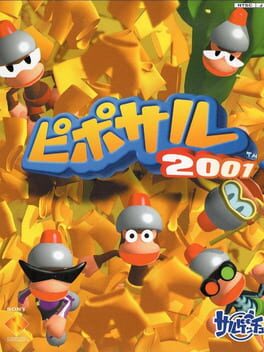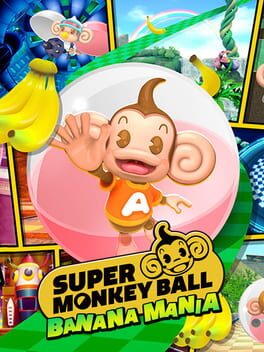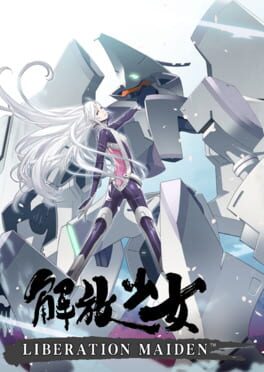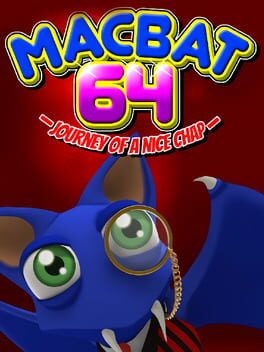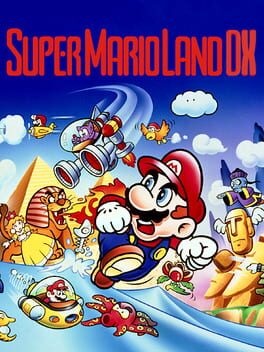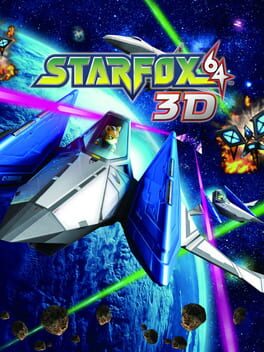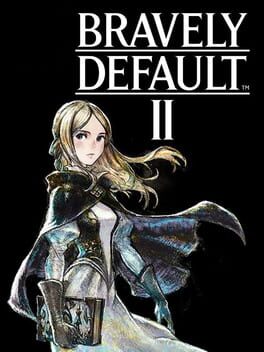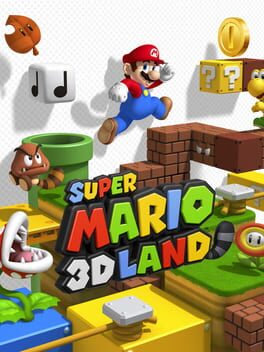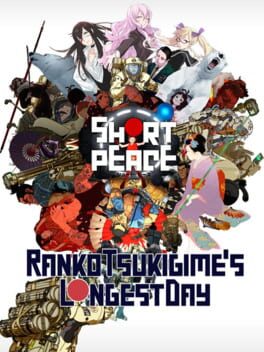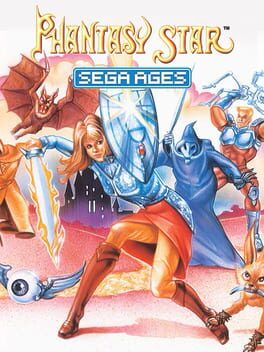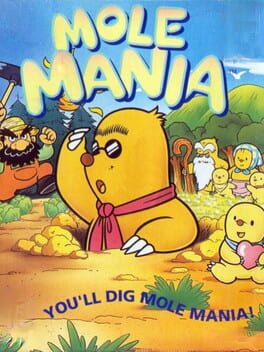RankNegativeOne
2001
Not crazy about it. Fails to utilize basic design principles from the game it's a spin-off of, and suffers as a result. Namely, there's no usage of the right stick, when aiming the vacuum independently would've been a huge help for much of the game; the PS2 even came standard with a dual stick controller, so I don't know why they didn't use it at all. The concept is decent enough, and if it just controlled better it might be fun to chase after S ranks, but as it stands, I'll leave it alone after beating the first iteration of the final level.
2012
2019
2011
Somehow worse than the original. Changes in lighting make the later levels of the hard route difficult to see in and various effects lack the impact they once had. Worst of all, the controls for loop and u-turn are mapped to boost/brake and up on the control stick, so you'll very often execute them accidentally, and far more often find yourself unable to do them in moments where you desperately need to. At the end of the day though, it's still Star Fox, so that's gotta be worth something.
2021
Might be too recent to say for sure, but this might be my new favorite turn-based rpg. The job system is fantastic, and the different combinations of abilities you can come up with are great, although I'm still not sure how much post-game content there is to really test your limits with it. The story seems very basic, but is actually very thematically solid throughout, and (if you're willing to stretch it just a bit) is well-supported by the gameplay mechanics as well. I found the characters likable, and their motivations understandable and well-suited to the story. The graphics have a charming look to them, though the painted environments of towns are a bit too low-resolution for how close they zoom in on them at some points. The music slaps; that almost feels like a given, based on the discography of the composer, but I'd be remiss not to mention it.
I will say though, that common enemy encounters don't serve much purpose or challenge, and (on Switch at least) there's a good deal of stuttering right after loading transitions (particularly if you skip a battle intro against a lot of enemies and try to use your "most recent" battle command to immediately launch 4 moves right after loading in, while the battle speed is turned up to max; that sounds very specific, but it came up a lot as I was grinding out jobs).
Unless you're physically allergic to the genre, I highly recommend it.
I will say though, that common enemy encounters don't serve much purpose or challenge, and (on Switch at least) there's a good deal of stuttering right after loading transitions (particularly if you skip a battle intro against a lot of enemies and try to use your "most recent" battle command to immediately launch 4 moves right after loading in, while the battle speed is turned up to max; that sounds very specific, but it came up a lot as I was grinding out jobs).
Unless you're physically allergic to the genre, I highly recommend it.
2011
Fantastic. Maybe it's recency bias, but it's honestly spurring me to play through all the Xeno (gears, saga, blade) games and work my way back to this one all over again. Honeymoon period or no, that's a pretty glowing review in itself.
The gradual buildup of systems is quite the feat, because you go from slowly chipping away at enemies with the few abilities at your disposal, quickly to mixing and matching ability sets, and then gradually being able to cross polinate abilities from different classes to eventually formulate completely coherent strategies from the pause screen menus alone; the hallmark of a good class-based jrpg, imho.
Not to say that there's no gameplay fun or strategy to be had in the in-the-moment execution of combat strategy either; the emphasis on status-affecting field deployments as well as positioning in combat makes it feel like whichever of the seven party members you're controlling is really leading the party.
Presentation feels top-notch, with just a few QoL nitpicks that I would hope for a change in; if patches down the line fix those, swell. Just things like reducing the repetition of voice lines for certain situations, an option to disable chain attack music (or even speed up chain attack animations; both symptoms of the same problem, that chain attacks take a lot of time), show owned item quantities in the collectapedia page, that sort of thing.
Even as I write this, I'm coming up with plans for NG+ builds or challenge run setups.
And I haven't even mentioned the story or music, both of which I'm VERY into (though on some fronts I can understand where parts of those wouldn't gel with some; the music is very flute-heavy, and the story [particularly towards the end] sometimes becomes a good deal more metaphorical than literal, leaving some literal logistic matters as apparent plot holes).
Give it a shot, I feel it's definitely worth your time, even if you haven't played the prior games in the series; it builds on them, but does not depend on you knowing them.
The gradual buildup of systems is quite the feat, because you go from slowly chipping away at enemies with the few abilities at your disposal, quickly to mixing and matching ability sets, and then gradually being able to cross polinate abilities from different classes to eventually formulate completely coherent strategies from the pause screen menus alone; the hallmark of a good class-based jrpg, imho.
Not to say that there's no gameplay fun or strategy to be had in the in-the-moment execution of combat strategy either; the emphasis on status-affecting field deployments as well as positioning in combat makes it feel like whichever of the seven party members you're controlling is really leading the party.
Presentation feels top-notch, with just a few QoL nitpicks that I would hope for a change in; if patches down the line fix those, swell. Just things like reducing the repetition of voice lines for certain situations, an option to disable chain attack music (or even speed up chain attack animations; both symptoms of the same problem, that chain attacks take a lot of time), show owned item quantities in the collectapedia page, that sort of thing.
Even as I write this, I'm coming up with plans for NG+ builds or challenge run setups.
And I haven't even mentioned the story or music, both of which I'm VERY into (though on some fronts I can understand where parts of those wouldn't gel with some; the music is very flute-heavy, and the story [particularly towards the end] sometimes becomes a good deal more metaphorical than literal, leaving some literal logistic matters as apparent plot holes).
Give it a shot, I feel it's definitely worth your time, even if you haven't played the prior games in the series; it builds on them, but does not depend on you knowing them.
TBD
idk why this is still "TBD" on here, it's out on itch.io.
A very neat tribute to shmup history in many ways, but the difficulty feels like it was tuned exclusively for the developer as they were testing it. Ended up credit feeding to reach the ending. I could imagine with enough memorization and skill (and possibly being an actual wizard) one could get really good and 1CC the thing. Worth a try, for sure!
A very neat tribute to shmup history in many ways, but the difficulty feels like it was tuned exclusively for the developer as they were testing it. Ended up credit feeding to reach the ending. I could imagine with enough memorization and skill (and possibly being an actual wizard) one could get really good and 1CC the thing. Worth a try, for sure!
1996
It's neat, often overlooked, but while it's impressive how much it does with very few concepts, by the end, it feels like it's overstayed its welcome, and every concept it's used has been stretched too thin. The bonus stages (and final boss) also feel very much at odds with the pace and playstyle of the rest of the game, requiring a speed and precision that the control scheme does not do much to accommodate. I would recommend against 100% completion (there's no bonus for it anyway). It would've been neat to see the idea explored again on the DS or 3DS, where the second screen could be used to see both aboveground and belowground simultaneously (a limitation that becomes an issue in a few stages with underground enemies), but it's too late for that now.
Beat the three stages currently out there, but didn't unlock all characters or fully upgrade. It's fun. First Garliclike I've played, and I'm not super familiar with the subject matter, so a lot of the jokes and references went right over my head, but I really enjoyed it. The item drops are varied enough that you can plan out a decent build from early on, though I wish there were more valid options for collabing maxed out items (I think I only ever got the comet and the rapid molotov bombs).
The slowdown gets pretty intense about halfway into any run. Generally it's helpful, since if there are enough enemies on-screen to slow the game down, it's actually useful to play in slow motion, but it gets pretty excessive, even with damage numbers and visual effects turned off. Not sure how that could be solved, I'm not sure how the game handles all the loaded objects under the hood.
High hopes for future updates.
The slowdown gets pretty intense about halfway into any run. Generally it's helpful, since if there are enough enemies on-screen to slow the game down, it's actually useful to play in slow motion, but it gets pretty excessive, even with damage numbers and visual effects turned off. Not sure how that could be solved, I'm not sure how the game handles all the loaded objects under the hood.
High hopes for future updates.
2017
Lacks the visual clarity the genre demands, has some interesting ideas in its systems, but it feels like it bungles a lot of them through non-telegraphed instant death attacks in the later levels, as well as just wonky movement and a power-up system that leaves you feeling either over or underpowered basically all the time. I don't think I'll be revisiting, and my compulsion to play as many GHM games as possible is the only reason I saw it through to the end.
Edit: bumping it up half a star in hindsight because of the number of interesting gameplay setpieces I still recall, like the rotating maze, or the branching paths in the waterfall level. More misses than hits, but they're all at least good ideas, even if the execution is sometimes off.
Edit: bumping it up half a star in hindsight because of the number of interesting gameplay setpieces I still recall, like the rotating maze, or the branching paths in the waterfall level. More misses than hits, but they're all at least good ideas, even if the execution is sometimes off.
